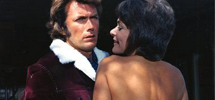Featured Scholarship
[wpcol_1third id=”” class=”” style=””]
The Actor’s Vision
by Steven Ryben
![]()
Discussions of “visions” in film studies are usually limited to film directors, but what would it mean to credit an actor with a vision? The actor’s vision might be understood as a process of thought, emotion, and action that unfolds gradually on film: not a way of being looked at, but a way of looking, glancing, and gazing at the world around her, and conveying meaning through this gaze.
[/wpcol_1third] [wpcol_1third id=”” class=”” style=””]
Wiping the Dust from Our Eyes
by Lauren Newton Glenn
![]()
Previously viewed images return to the consciousness when triggered by similar or related images, even if they are not understood as related by the conscious mind. For example, Steinbeck’s written images can trigger memories of Lange’s photographs, and Lange’s images can trigger memories of the Ford/Toland images in the film. For the public familiar with these related images, memory associates them with one another.
[/wpcol_1third] [wpcol_1third_end id=”” class=”” style=””]
West of Eden
by Duncan Pittman

As the film begins, the camera traces the coastline to Eastwood’s Dave, a tall handsome man in dark sunglasses, exuding “California cool” as he zooms down the coastal highway in his sleek black convertible, blaring rock music as his shaggy blond hair and hip sideburns tousle in the sea breeze. Initially, the audience is led to believe that this film will be like any other “California” film, a familiar image that serves as misdirection so he can tell us a far deeper, darker story.
[/wpcol_1third_end]
